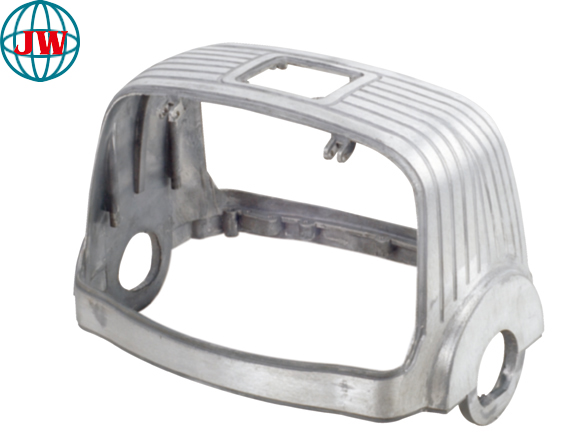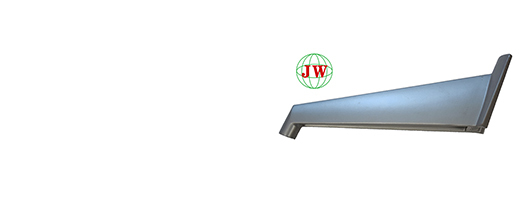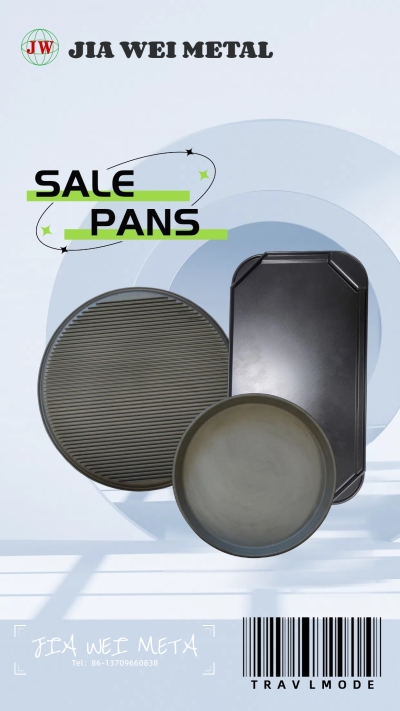
Revolutionizing Lighting Design with Die Casting Technology
2025-06-04 16:36
In the dynamic world of lighting manufacturing, die casting has emerged as a transformative force, enabling the production of high-quality, durable, and aesthetically pleasing lighting components. From intricate fixtures to robust structural elements, lighting die castings have become indispensable in modern lighting design. This article explores the benefits, applications, and technological advancements of die casting in the lighting industry, with a focus on lighting die casting connection molds, lighting die casting connection accessories, and die-cast connectors.
The Die Casting Process for Lighting Components
Die casting is a manufacturing process that involves injecting molten metal under high pressure into a mold cavity. For lighting applications, precision-engineered lighting die casting connection molds are used to create components with intricate details and tight tolerances. The process typically uses aluminum or zinc alloys, which offer excellent thermal conductivity, corrosion resistance, and lightweight properties—ideal for lighting fixtures that require efficient heat dissipation and durability.
Die casting process for lighting components
Figure 1: The die casting process for lighting components ensures precision and consistency.
The use of lighting die casting connection molds allows manufacturers to produce complex shapes that would be challenging or impossible with other manufacturing methods. This flexibility in design enables lighting designers to create innovative fixtures that combine functionality with aesthetic appeal. Whether it's a minimalist pendant light or an ornate chandelier, die casting provides the precision and repeatability needed for mass production while maintaining high quality standards.

Benefits of Die Cast Lighting Components
Lighting die castings offer numerous advantages over traditional manufacturing methods, making them a preferred choice for lighting manufacturers worldwide:
1. Precision and Consistency
Die casting ensures exceptional dimensional accuracy, allowing for the production of components that fit perfectly into lighting assemblies. This precision reduces assembly time and minimizes errors, resulting in higher-quality finished products. The use of lighting die casting connection molds guarantees consistency across large production runs, ensuring that every component meets the same strict specifications.
2. Thermal Management
Aluminum and zinc alloys used in die casting have excellent thermal conductivity, making them ideal for dissipating heat generated by LED lighting sources. Efficient thermal management extends the lifespan of LEDs and maintains their performance over time, reducing the need for frequent replacements and enhancing energy efficiency.
Die cast heat sink for LED lighting
Figure 2: Die cast heat sinks efficiently manage thermal dissipation in LED lighting.
3. Design Flexibility
Die casting enables the creation of intricate designs and complex geometries, giving lighting designers unprecedented freedom to innovate. From decorative elements to functional components, lighting die casting connection accessories and die-cast connectors can be customized to meet specific design requirements, whether for residential, commercial, or industrial applications.
4. Durability and Corrosion Resistance
Lighting fixtures made with die-cast components are highly durable and resistant to corrosion, making them suitable for a wide range of environments. Whether installed in humid bathrooms, outdoor spaces, or industrial settings, die-cast lighting components maintain their integrity and appearance over time, reducing maintenance costs and ensuring long-term performance.
Applications of Die Casting in Lighting
The versatility of die casting makes it suitable for a wide range of lighting applications, from residential to commercial and industrial settings:
1. Residential Lighting
In homes, die-cast components are used in various lighting fixtures, including pendant lights, chandeliers, recessed lighting, and wall sconces. Die-cast connectors ensure secure and stable connections between different parts of the fixture, while decorative elements add aesthetic value to the design.
2. Commercial Lighting
Commercial spaces such as offices, retail stores, and hospitality venues require lighting solutions that are both functional and visually appealing. Die casting is used to create robust fixtures that can withstand heavy use while providing efficient illumination. Lighting die casting connection accessories play a crucial role in ensuring the reliability and longevity of these fixtures.
Commercial lighting fixtures with die cast components
Figure 3: Die cast components are essential for commercial lighting fixtures.
3. Industrial Lighting
In industrial environments, lighting must be durable and able to withstand harsh conditions. Die-cast lighting components are resistant to vibration, impact, and extreme temperatures, making them ideal for factories, warehouses, and outdoor industrial sites. Lighting die castings provide the reliability needed for critical applications where downtime is costly.
4. Outdoor Lighting
Outdoor lighting fixtures, such as streetlights, landscape lighting, and architectural lighting, require components that can resist corrosion and weathering. Die casting using aluminum or zinc alloys ensures that these fixtures remain functional and attractive even in challenging outdoor environments.
Technological Advancements in Lighting Die Casting
The lighting industry continues to evolve, driven by advancements in technology and changing consumer demands. Die casting technology has kept pace with these changes, introducing innovations that enhance efficiency, quality, and sustainability:
1. Precision Tooling
Modern lighting die casting connection molds are designed using advanced computer-aided design (CAD) and computer-aided manufacturing (CAM) technologies, allowing for greater precision and complexity. This results in components with tighter tolerances and improved surface finishes, reducing the need for post-processing.
2. Automation and Robotics
Automation and robotics have transformed the die casting process, improving efficiency and consistency. Robotic systems handle tasks such as mold spraying, part extraction, and quality inspection, reducing human error and increasing production speed. This automation also enhances worker safety by minimizing exposure to high-temperature processes.
3. Sustainable Materials
As sustainability becomes increasingly important, die casting manufacturers are adopting eco-friendly materials and processes. Aluminum and zinc alloys are highly recyclable, making them a sustainable choice for lighting components. Additionally, advancements in alloy formulations have reduced the environmental impact of die casting while maintaining or improving component performance.
Sustainable die casting processes
Figure 4: Sustainable die casting processes reduce environmental impact.
Choosing the Right Die Casting Partner for Lighting Applications
Selecting a reliable die casting partner is crucial for achieving high-quality lighting components that meet your specific requirements. Consider the following factors when choosing a die casting manufacturer:
1. Experience and Expertise
Look for a manufacturer with extensive experience in producing lighting die castings and lighting die casting connection accessories. A company with a deep understanding of the lighting industry will be better equipped to address your unique challenges and requirements.
2. Quality Control
Ensure the manufacturer has rigorous quality control measures in place to guarantee the consistency and reliability of their products. This includes testing for dimensional accuracy, material properties, and thermal performance.
3. Design Support
A partner that offers design support can help optimize your lighting components for die casting, ensuring the best possible outcome. This includes assistance with mold design, material selection, and manufacturability analysis.
4. Sustainability Practices
Consider a manufacturer that prioritizes sustainability, such as using recycled materials and implementing energy-efficient processes. This aligns with the growing demand for environmentally friendly lighting solutions.
Conclusion
Die casting technology has revolutionized the lighting industry, enabling the production of high-quality, durable, and innovative lighting components. From lighting die castings and lighting die casting connection molds to lighting die casting connection accessories and die-cast connectors, die casting offers numerous benefits, die casting offers numerous benefits that make it the preferred choice for lighting manufacturers worldwide. As technology continues to advance, die casting will play an even more significant role in shaping the future of lighting design, driving innovation and sustainability in the industry.
Get the latest price? We'll respond as soon as possible(within 12 hours)












